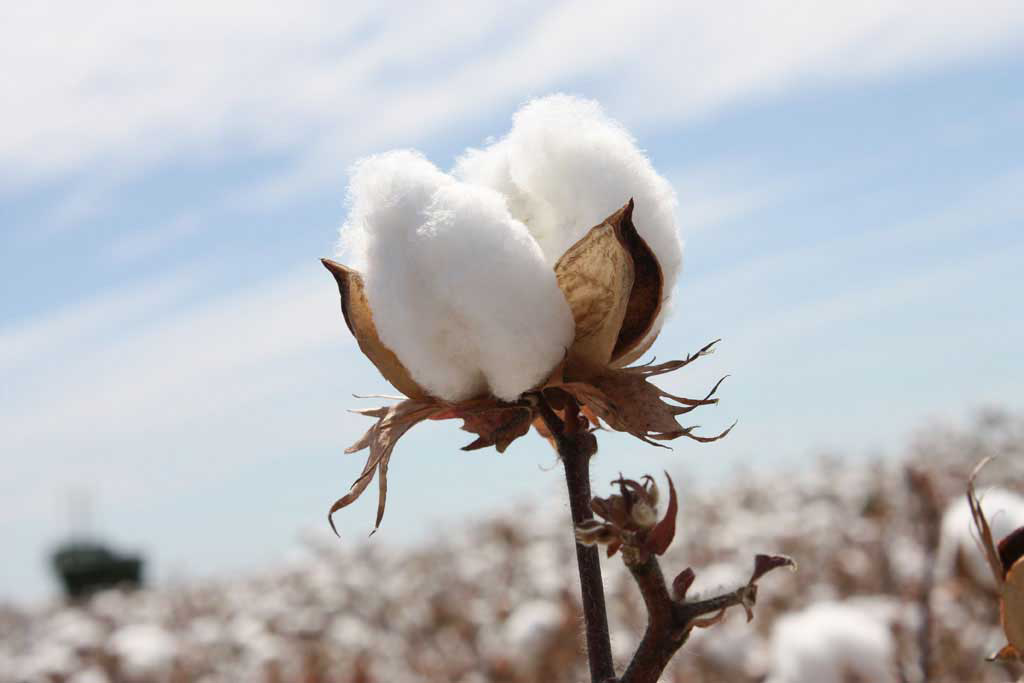Cottonseed in animal feed: First remove the gossypol

Cottonseed and cottonseed meal are widely used as protein supplements in animal feed. However, the benefits of cottonseed meal are mitigated by the drawback of high gossypol content. However, gossypol can be adsorbed by highly-refined montmorillonite enterosorbents, in vitro studies have shown.
Gossypol is a polyphenolic yellow pigment in the cotton plant (Gossypium spp); it functions as a toxin to protect the plant from attack by some insects. The toxicity of gossypol extends to mammals, as well. Prolonged exposure to excess gossypol has been shown to result in labored breathing, dyspnea, decreased growth rate and anorexia, as well as increased susceptibility to stress for most animals. Ruminants like cows and sheep appear to be more tolerant of gossypol, perhaps because the compound is detoxified in the rumen.
Controlling is still a concern
While some work has shown possible mitigating effects of supplementing animal diets with iron or selenium, the best current strategy for dealing with gossypol is to limit the intake of cottonseed-based feed ingredients. Cottonseed processing techniques employing more heat and pressure, and new genetic varieties of cotton have led to reduced gossypol levels in animal feeds, but controlling gossypol intake is still a concern in many livestock classes. Limits for feed contents of gossypol have been identified as 100 ppm for swine and pre-ruminants, 50 ppm for layers and 100-150 ppm for broilers.
Using Calibrin A and Z
The most desirable approach for dealing with the gossypol problem is its removal from the cottonseed meal, but large scale extraction techniques are not practical. Diluting the cottonseed meal with other ingredients is effective but costly, and when such an alternative is not available, preventing adsorption of the gossypol in the digestive tract of the animal by the use of toxin adsorbents as feed additives is one of the more promising approaches to decrease the risk for toxicoses in farm animals. Calibrin-A and -Z are highly-refined montmorillonite enterosorbents with a high capacity to sequester the most common mycotoxins. However, their efficacy on gossypol has not yet been demonstrated.
Significant reduction
To accomplish this demonstration, we used HPLC-based in vitro binding assays to estimate the adsorption of gossypol by Calibrin-A and Calibrin-Z. Seven different binder:gossypol ratios—ranging from 50:1 to 2250:1 by weight—in two different pH solutions (pH 3.0 and 5.5) were examined in our evaluation. The results show that addition of Calibrin-A or Calibrin-Z at a concentration of 0.1 to 4.5 mg/mL to the gossypol solutions in pH 3.0 or pH 5.5 buffer solutions resulted in a significant reduction of gossypol concentrations. The data are presented in Figures 1 and 2 and in Tables 1 and 2 as the Adsorption (in %) obtained by comparing the free gossypol in solutions treated with binder to the free gossypol in the untreated solutions. The %Adsorption values for Calibrin-A and Calibrin-Z were similar in pH 5.5 buffer, but Calibrin-Z showed itself to be more effective at lower binder concentrations in pH 3 buffer. These findings suggest that either Calibrin-A or Calibrin-Z can be used as gossypol adsorbent materials to prevent the adverse effects of gossypol in animals.











